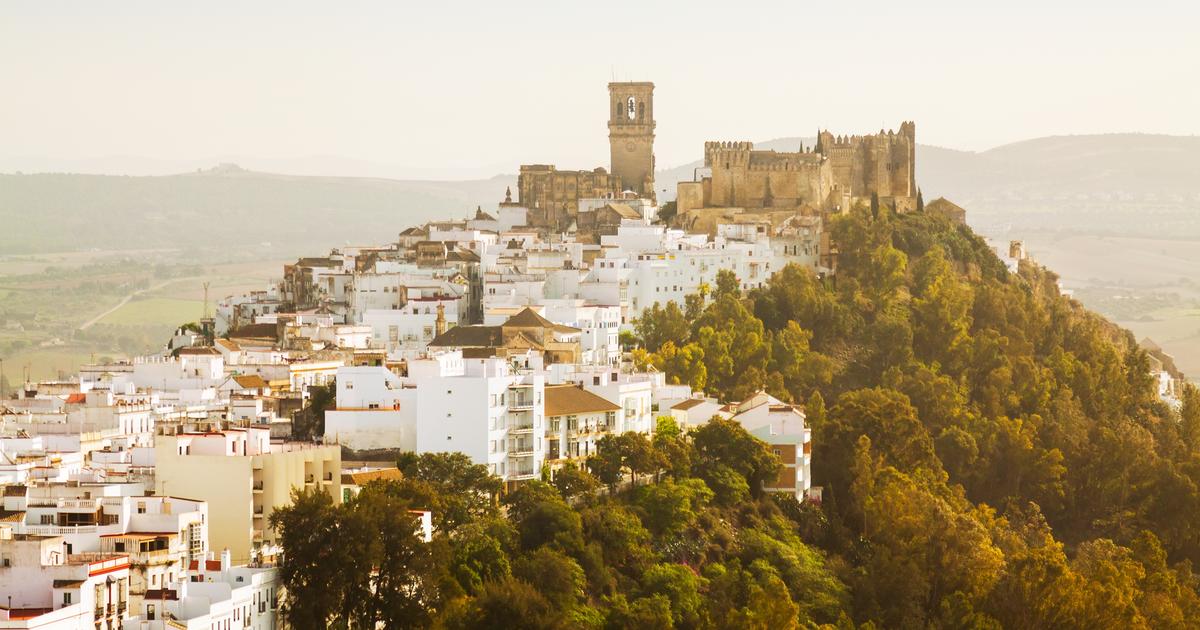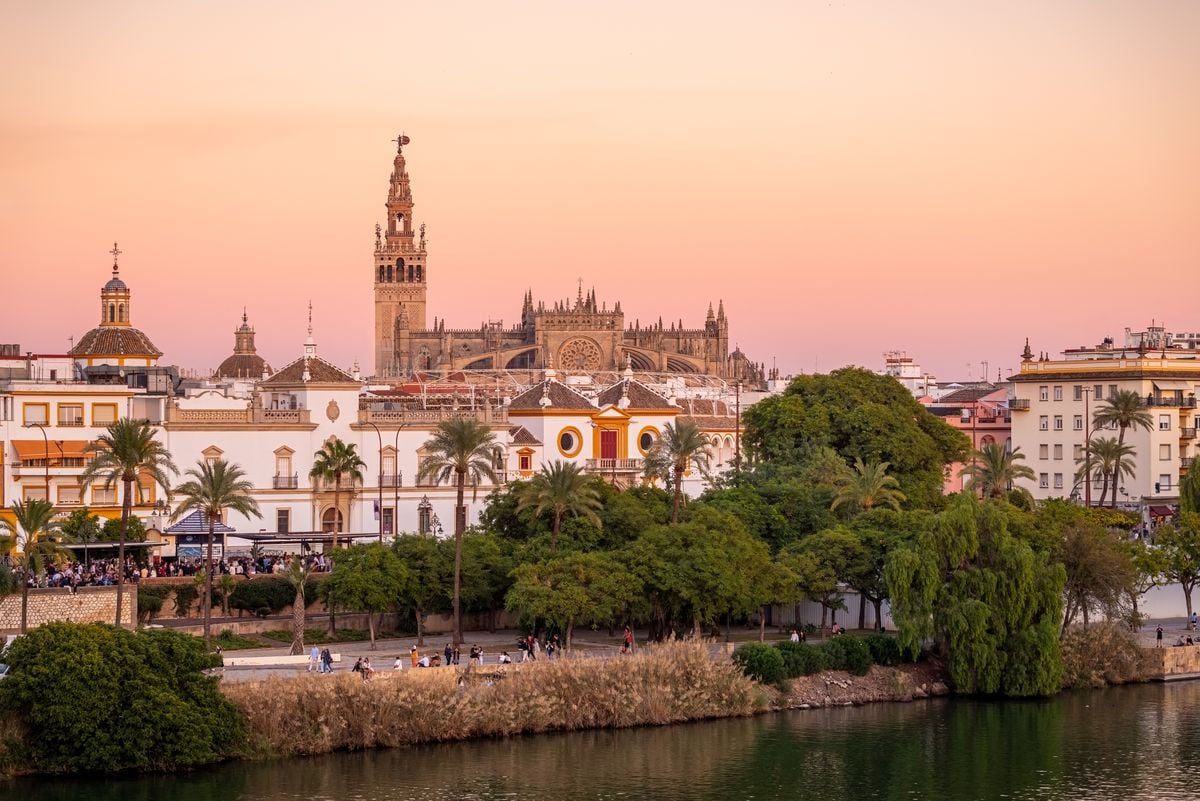The olive tree celebrates its big festival in winter.
The infinite rows of this ancient tree
that spread throughout the Andalusian geography are now witness to the harvesting of olives, the main manifestation of the olive culture.
And, in this month of January, this immense natural and ethnographic legacy will reach the Spanish Historical Heritage Council so that, in turn, it can be elevated to
Unesco
to make official what is already a cry: that the cultural landscape of the olive grove of Andalusia is a world heritage site.
enlarge photo cova fdez.
The humanized forest of the Andalusian olive grove configures
a unique environment that provides life and culture
and that, in some way, marks the personality of this territory since ancient times, in such a way that the history of the community is inexorably linked to this tree, emblem also of the Mediterranean culture.
“Old thirsty olive trees / under the clear sun of the day, / dusty olive groves / from the Andalusian countryside”, as defined by
the poet Antonio Machado
during his stay as a French teacher in Baeza.
A forest of more than 180 million trees on a 1.5 million hectares that makes the region the world's leading producer of olive oil.
Our journey through
this green mantle has as a common thread the axis that connects the Jaen city of Úbeda with the Sevillian city of Estepa
and which, how could it be otherwise, has been baptized as
the Autovía del Olivar.
It is an itinerary of
just over 200 kilometers
that represents the articulating and most visible element of a unique landscape, with incursions into the
regions of La Loma, Sierra Mágina or Sierra Sur,
in the province of Jaén;
the Subbética Cordobesa
, the middle and upper fields of the
Guadalquivir
and
the Estepa mountains
.
The beauty of the endless rows of olive trees is something that does not leave those who contemplate them for the first time impassive.
So much so that, according to legend, when in 1823
the One Hundred Thousand Sons of San Luis
- the French army arrived to put an end to Spanish liberalism and in defense of Bourbon absolutism - crossed the
Despeñaperros
gorge on their
way to Cádiz, surrendered their arms in
astonishment. before the spectacular sea of olive trees
that opened before them.
Endless forests that reach the confines of many scenarios.
The olive tree is a tree with an erect gray to greyish-green trunk with protrusions and fissures
, with a thick stem and a rounded crown.
Its cultivation possibly originated more than
4,000 years ago
in the Middle East, spreading to the West throughout the Mediterranean basin.
In the province of Jaén, as well as in the south of Córdoba, the northwest of Granada, the north of Malaga and the southeast of Seville, the olive tree is practically a monoculture.
It is in the province of Jaén, the main olive oil producer in the world, where the perception of the olive growing horizons acquires its maximum dimension.
Wenceslao Fernández Flórez
wrote in the book
Sed en los olivares
(1953) that Jaén “dresses in an immense ocher cloth dotted with aligned olive trees.
The olive tree is the thematic note, it forms its legions on the flat land and adjusts the tapestry of its silver canopies to the hills ”.
An olive grove farm in the Cordovan town of Carcabuey.
paco bridges
The poet Miguel Hernández,
married to Josefina Manresa from Jaén, was closely linked to this land where he was assigned to direct the newspaper
Altavoz del Frente Sur.
And it was during his stay in Jaén that he wrote some of his most famous poems contained in his book
Viento del pueblo
(1937).
One of them,
Aceituneros,
has recently been turned into an anthem of the olive province par excellence: “Andalusians of Jaén, / haughty olive trees, / tell me in my soul who, / who raised the olive trees?
/ They were not raised by nothingness, / neither money, nor the lord, / but the quiet land, / work and sweat.
United to the pure water / and to the united planets, / the three gave the beauty / of the twisted trunks ”.
A large part of Miguel Hernández's legacy can be found in
the museum that bears his name in the town of Quesada
, and which shares space with that of the painter
Rafael Zabaleta
, an artist influenced by Picasso's cubism who took the olive tree and the agrarian landscape as the axis of its scenography.
History of eleotecnia
In the region of La Loma, where Antonio Machado inspired part of his poetic production ("From my window, / Baeza field, / to the clear moon!"), We make a first stop at
the La Laguna de Baeza farm
, a one of the most representative samples of rural architecture in the high Guadalquivir countryside.
Its
Museum of the Culture of the Olive tree
brings us closer to the pressing systems that run through the history of eleotechnics in Andalusia, from the pre-industrial mechanisms based on the beam and turret press - inherited from Roman and Andalusian culture - to the first industrial technologies, pioneered in the Sierra Morena regions and the northeastern Andalusian countryside.
enlarge photo Olives just harvested on a farm in Seville.
paco bridges
In this hacienda, converted into the
headquarters of a hospitality school
, its winery also stands out, a construction from the mid-nineteenth century that is probably one of the elements of greatest architectural value in the complex.
Finally, in his garden varieties of the olive the diffuse
traditional harvesting techniques
as
the
butifuera
,
work with esparto applied to the olive, gastronomy with olive oil, the qualities of the oil and its various uses since antiquity, both medicinal like cosmetics.
At the height of the capital of Jaén we momentarily leave the Olivar Highway to go to
the Active Museum of Olive Oil and Sustainability Terra Oleum
, located in the Geolit Science and Technology Park, on the A-44 highway, Bailén-Motril, next to the
Mengíbar
municipality
.
In addition to the museum space on olive culture, its olive library is especially attractive,
a delicious journey through the aromas of the best extra virgin olive oils in
the world.
Green and ripe fruity, tomato or fig aromas, a set of olfactory, gustatory and tactile sensations that describe the sensory profile of each oil, with the added incentive that the tasting of these top quality wines is included in the price of the entry (five euros).
Terra Oleum is surrounded by a small forest of hundred-year-old olive trees, the specimens of which reveal the passage of time written on winding trunks over more than four centuries.
Before resuming the journey through the countryside of Jaén and Córdoba, we enter
the mountain olive groves of Sierra Mágina
, the region that gives its name to one of the dozen protected designations of origin (PDO) of olive oil in Andalusia.
The karst massif of Magina dominates a landscape where the olive grove blends with the culture of water.
The olive trees, with their little trailing shadow, spill everywhere, geometric and intricate, docile and distinct.
The darker and rougher green of the mountain vegetation with the combination of the reddish brown of the tilled land contrasts with the beauty offered by the villages settled on the slopes of the mountains, dominated by the white color of the houses.
Demonstration with old presses at the Olive Festival in the Jaén town of Martos.
JM PEDROSA
Magina, Magina, which inspired the imaginary territory of the novels by
Antonio Muñoz Molina
, can be discovered at the Mata-Bejid visitor center in Cambil.
It is a great idea to visit this mountainous massif integrated in the Network of Natural Spaces of Andalusia.
Several signposted trails start from the center, such as
Gibralberca
and the ascent to
Mágina and Miramundos peaks
, which bring us closer to the most conspicuous places in this natural park.
Routes that can also be done by mountain bike and
eco-karts.
We are heading south towards Subbética, a series of hilly countryside in the southeast of the province of Córdoba, in the geographical center of Andalusia.
As the playwright
Antonio Gala
wrote
: “The incontinent sun dazzles me with a landscape so shadowless that it resembles a naive painting.
(…) The moon rose and he began to walk through the streets of olive trees planted in a royal frame ”.
The route runs through the Guadajoz river basin and crosses the municipalities of
Espejo, Castro del Río, Baena or Zuheros
, archetype of the olive landscape.
Here vestiges of the international commercialization of olive oil (with the Oil Train) and of the first industrialization are preserved.
In
Montoro
, on the banks of the Guadalquivir, we find the best sample of the olive grove of the Enlightenment.
It is worth a visit to its centenary oil mills, which preserve their traditional architecture, with their pebble patios and wide millstone walls.
The Greenway of Oil as it passes through Torredelcampo, in Jaén.
paco bridges
The best alternative to soak up the olive-growing ocean is
the Vía Verde del Aceite
, which runs between the Sierra Sur Jaén and the Subbética Cordobesa through the old train route that, for almost a century, served to deliver the liquid gold of these lands through the port of Malaga.
A 128-kilometer railway
that was closed in 1985 and that crosses
a handful of towns that ooze oil fragrance
from all corners.
The Vía Verde del Aceite winds its way through olive groves that make up a landscape of enormous beauty dotted with typical Andalusian farmhouses.
Hikers, runners, cyclists and nature lovers pass through here every day.
The Interpretation Center of the Goat Oil Train
and the
Luque Station
, both in the province of Córdoba, are a good proposal to soak up the traveler in the olive-growing universe, as well as allowing tastings of the best EVOO and traditional gastronomy. .
Singular rural architecture
The Olivar Highway expires in the Sevillian town of
Estepa,
but through the A-92 we continue our journey through the
countryside of the lower Guadalquivir.
The landscape dominated by the ancient traditional olive grove has mutated towards an intensive and super-intensive cultivation, the main reason why olive oil productions have soared in recent years.
enlarge photo One of the towers of Hacienda Guzmán (Seville) alejandro ruesga
Oil mills, farms, farmhouses, farmhouses or mills
have been forging a unique rural architecture intimately linked to the natural landscape and to a farming system that has been inherited for centuries.
A good example of this is found in
Hacienda Guzmán
, in the municipality of
La Rinconada,
about 20 kilometers from the capital of Seville.
It is one of the main emblems of the olive culture in Andalusia and also
a world benchmark in terms of oleotourism
.
An activity, tourism linked to olive culture, on the rise in recent years and whose offer is very well reflected in the oleotourjaen.es portal of the Diputación de Jaén, the main promoter of the candidacy of the cultural landscape of the Andalusian olive grove to world heritage .
The history of Hacienda Guzmán dates back more than six centuries, when in the period after the discovery of America,
Hernando, son of the discoverer Christopher Columbus
, exported the olive oil produced on this property to the New World.
King Fernando VI
or
the Marquis de la Ensenada
are just some of the historical figures linked to this hacienda.
Each of its three towers housed
a beam mill
between the 16th and 19th centuries, which made it the largest olive oil factory in the world 500 years ago.
Today it offers a faithful recreation of the process, as it has
a
perfectly restored
17th century oil mill
.
Another of its attractions is its
museum of living olive trees, with more than 150 varieties.
And in the olive library, visitors can learn about each of the species with its particular color, shape, fruit or type of branches.
The olive tree, a symbol of peace and reconciliation and one of the
icons of Mediterranean culture
, has its origins in the mists of time.
The Bible includes several passages in which oil is used as a currency of exchange and tribute.
For millennia, the civilizations that have developed around the Mediterranean have made the olive tree and oil a central element of their respective cultures.
Since the Phoenicians, the oil from Hispania was highly esteemed, which is why a great trade soon developed that was notably increased during the Roman Empire and the Spanish-Arab period.
And this is how Betica (which today occupies the westernmost area of Andalusia) became the main supplier of liquid gold for the Mediterranean trade.
Samples of the splendor of the olive culture can currently be found in some parts of Andalusia.
Such as
the archaeological site of Marroquíes Bajos
, in the city of Jaén, where two large oil mills were located, an associated stately villa and a temple, a monumental complex that supports the thesis that Jaén was a first-rate commercial center in Roman times. order.
Or the discovery of
some thirty potteries in the Sevillian countryside of Écija
that lit up more than 800 stamps of artisans embodied in the amphorae that were distributed throughout Europe and the Maghreb.
And it is that in the old Astigi, in the lower Genil, there is the main sample of the olive grove from Roman times.
Precisely,
Mount Testaccio in Rome
treasures more than
40 million amphoras
from the export of olive oil from Andalusian Baetica.
The olive tree is present in most of the mythologies and religions of the Mediterranean environment.
In the birth of Rome it also played an important role, since Romulus and Remus were suckled by a she-wolf under an olive tree.
The acebuche de la Hoya, a 350-year-old olive tree in La Iruela (Jaén).
JOSÉ MANUEL PEDROSA
A monument tree
The cultural landscape of the Andalusian olive grove that yearns to be recognized by Unesco has other unique elements that are well worth a visit.
This is the case, for example, of its
famous unique olive trees
.
Like the
Fuentebuena olive tree
, in the foothills of Sierra de Segura.
It is declared
a natural monument
and is listed in the
Guinness Book of Records
for its impressive plant: 10 meters high, four in diameter and a volume of branches of 260 cubic meters.
The
centennial olive trees of Martos
(Jaén)
are also famous
, a town that celebrates
the Olive Festival
every December 8
, which symbolizes the beginning of the harvesting campaign.
In the Marteño municipality, more than 60% of its olive trees are older than 200 years, and some are even millennial.
Or the
Route of the Centennial Olive Trees of Órgiva
, in the westernmost Alpujarra of Granada.
It is a path of about six kilometers, with views of the Sierra de Lújar and Sierra Nevada, among these large trees.
Granada, in the eastern part of Andalusia, is another of the territories that make the olive tree one of its tenants in daily life.
And that's how Federico García Lorca defined them
: “The olive field / opens and closes like a fan.
Above the olive grove / there is a sunken sky / and a dark rain of cold stars ”.
In the Lecrín valley the best sample of olive groves from medieval-Islamic times is preserved.
A totally different landscape is offered by
the olive groves of the Los Alcornocales natural park
, in Cádiz.
In these payments, the wild olive tree of spontaneous growth, plays an important role and provides a transitional habitat between the countryside and the mountains.
At the
El Aljibe visitor center
, which includes a botanical garden, we can get closer to these tree formations (which preceded the seas of olive trees) and the different ways in which man has interacted with them throughout history.
Practical Guide
Museum of the Culture of the Olive Tree, in Baeza
Active Museum of Olive Oil and Sustainability Terra Oleum, in Mengíbar
Mata-Bejid Visitor Center, in Cambil
Greenway of Oil
Hacienda Guzmán, in La Rinconada
El Aljibe visitor center, in the Los Alcornocales natural park
Andalusia Tourist Office
Find inspiration for your next trips on our Facebook and Twitter and Instagram or subscribe here to the El Viajero Newsletter.








